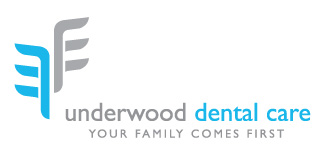Courtesy of the Sydney Morning Herald…
Smile, you’ve just been had … but you may not mind
DAISY DUMAS
July 5, 2012 – 10:15AM
So what do the dental experts say about those teeth-whitening toothpastes which Choice research exposed as an expensive waste of time?
Welcome to the toothpaste aisle: swathes of loud logos, glittering, hologrammed packaging, silver flashes and quasi-scientific, noisy claims: “advanced-whitening”, “multi-action”, “enamel-lock”, “micro-cleaning crystals”.
Good-bye stains, farewell yellow grins, hello, dazzling smiles?
Perhaps not. The multi-billion dollar toothpaste industry is not as squeaky-clean as it makes out to be, new research has found. But the Australian Dental Association says the devil is in the detail – a case of buyer beware – and some buyers admit they will continue to buy when manufacturers tell them what they want to hear.
The Choice investigation into the active properties of 17 popular so-called whitening toothpastes concluded a no-frills toothpaste would produce the same results for a fraction of the price.
Brands are able to label their products as whitening because of fine print, it turns out. Choice found that the products “promis[e] whiter teeth as a result of stain removal, not an overall whitening treatment.”
“These terms give the impression that the large range of toothpastes all do something different, with the expensive items doing something more than a basic product,” said Choice representative, Ingrid Just.
“In reality, you’re paying extra for essentially the same product.”
Namely, that is a brilliantly-marketed combination of fluoride, a mild abrasive such as calcium carbonate or hydrated silica, and humectants to help the paste retain water.
Professor Ian Meyers, the Australian Dental Association’s spokesman, explains that the devil’s in the detail when it comes to what customers are led to believe.
“It depends on how you define the terms bleaching and whitening,” he said. “Whitening toothpastes lighten teeth from the surface; they cause a whitening effect without a true bleaching effect.”
Essentially, he says, the products do not claim to bleach teeth, instead lightening using abrasion and polishing agents which buff away surface stains.
And while they may well help some individuals, Meyers is not an advocate of the bells-and-whistles products.
“I don’t tend to recommend whitening toothpastes as a general rule. We don’t dissuade people – we tell them they are not going to do any damage but can’t guarantee they’ll meet claims of the manufacturer.”
He says to look for toothpastes that contain a mild detergent (to lift grease and dirt from teeth), fluoride and a mild abrasive. “Nearly all toothpastes will contain those basics – it’s the add-ons after that may or may not have success depending on the individual.”
And it is those add-ons that bump the price up. “Less expensive toothpastes can be just as effective as more expensive ones … I’m not defending that manufacturers probably charge more than they should.”
He says that any peroxide in toothpastes is in such minimal amounts that it is as good as negligible, while strict industry limits mean that pastes must not exceed a certain level of abrasion – meaning that the polishing power of some high-end pastes is questionable.
Yet, there is no doubting their popularity. Back in our supermarket aisle, premium toothpastes sit on eye-level shelves, garish packaging scrambling for attention on the busy shelves. Stoop down to the bottom shelf and the run-of-the-mill pastes sit, a little neglected, in the shade.
Of all toothpastes in Australia, 92 per cent are made by heavyweights Colgate-Palmolive and GlaxoSmithKline, experts on spinning a minty fresh image.
There is, after all, nothing new about treating claims over health and beauty products with a judicious pinch of salt.
A browse across a handful of dentist practice websites shows that most FAQs sections include a line or two in answer to “Do whitening toothpastes actually work?” Their overarching tone is one of scepticism, with dentists making an effort to point out that some products may work well for some individuals but that professional bleaching is the best way to ‘whiten’ teeth.
The marketing message persists, however. Victoria Bell, 30, a stay at home mum, says she would “never spend $8 on a tube of toothpaste”, but will choose a whitening type over others.
“I would still probably buy it,” the Redfern, NSW, local says in light of the research. “It’s not doing you any harm.”
She says that manufacturers, “are basically telling you want to hear,” and that she holds out for whitening toothpastes to do what they say they’ll do.
“I suppose I am your typical consumer,” said the mother-of-one. “You have to put your trust in the manufacturer – what’s the alternative?”
The answer, as Meyer put it, is to follow a daily dental routine of brushing with a reputable brand of paste and taking your dentist’s advice.
Read more: http://www.smh.com.au/lifestyle/beauty/smile-youve-just-been-had–but-you-may-not-mind-20120704-21gro.html#ixzz1ziVLA0X9
